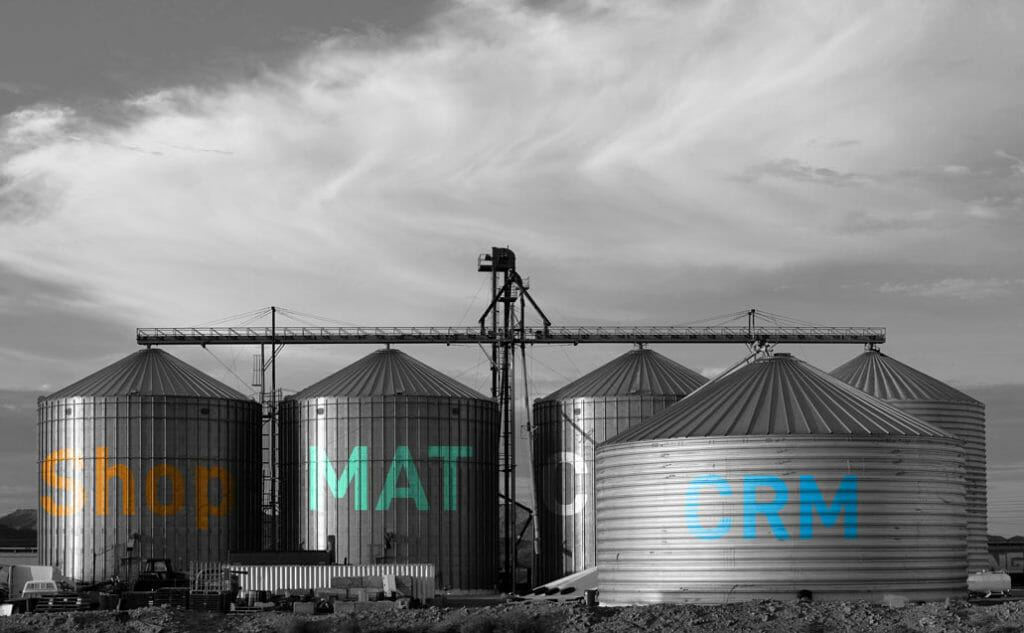The hyper-empowered customer (1) – This species is encountered everywhere today – certainly even more frequently in the B2C segment than when internal company processes first have to be run through – but ultimately a short, critical Internet search is THE way to find what you’re looking for. If you don’t find what you’re looking for, you’ll jump ship.
As a company, we can take advantage of that: The tracking mechanisms available today on the website, landing page, e-shop and all other points of contact enable us, at best, to show the potential customer a customized offer directly before he finds it himself. Alternatively, we can also channel them into suitable customer journeys and provide them with appealing content in bits and pieces until they make their purchase decision – often not at the moment of searching. Then, however, it was at least not necessary for him to go on the search again himself.
No marketing or sales employee can (or should!) deal with each visitor as quickly, extensively and individually as is possible with technological support.
Translated with www.DeepL.com/Translator (free version)
Alle Macht den Daten – aber keine den Silos (2)
In order to even have the chance to consider all touchpoints, we naturally need the information collected about our prospective customer in one place. Holistic, integrated platform solutions, with the option of interfaces to relevant third-party systems that cannot be integrated, have a clear advantage here over isolated solutions.
It is not always possible to map all requirements for necessary technological solutions in one system or platform – in fact, almost never. However, a distinction should be made here as to whether data relevant to the further customer relationship to be established is located in non-integrated systems (such as CRM or marketing automation data) or whether it is of secondary importance to have this fully integrated (such as PIM or MAM). In the second case, it may be sufficient not to aim for a holistic integration, but to use the data only where it is needed. If necessary, a data warehouse can also be helpful, in which the information can flow together, be distributed and evaluated.
Without being able to retrieve at least the current master and transaction data, such as website visits, purchases or event visits, consolidated in one place, it can be difficult with hyper-personalized offers. Connecting CRM and marketing automation systems is a first step. Selecting a marketing automation tool that includes at least the day-to-day doings of marketing, such as landing page and web form creation, campaign management, content marketing, lead generation, social marketing and analytics, supports the platform idea. (3)
So what do we do with the data?

From “data-rich” to “data-intelligent”.
Around 75% of marketing decisions are based on data. (4) But this data should be collected, evaluated, combined and used in a targeted manner. Storage alone does not bring increased conversions on landing pages and certainly not a higher closing rate with, at best, less sales effort.
To use the generated data intelligently, we need to ask ourselves two questions:
- Where do we need to work ahead with human intelligence in order to even know in which direction we should think with the help of the data?
- How can modern technologies, including big data approaches and AI, help us to gain insights from the data?
Human intelligence as groundwork.
The data do not know by themselves how they can help us. Nor do they know what they were generated for in the first place. But we know. We can at least define it by developing go-to-market approaches, characterizing our buyer personas, and setting up exemplary customer journeys backed by content. In doing so, we create the foundation for the subsequent technological support of our plans, which no marketing automation or AI technology can provide us with (today).
Technology support.
We can go down the path of individualized and personalized addressing that is common today by using marketing automation tools as technology support. This way, we at least ensure that we move away from the famous watering can principle (where most prospects would be ‘drowned’ anyway) to interest-based next content. In this way, we meet today’s standard – but nothing more.

A head start through AI
For more than a third of German B2B companies, it is clear that AI is relevant in marketing and sales. However, not even a third have even started planning an AI project. The conclusion is clear: AI gives you a head start! (4)
Let’s keep it short: AI helps to decode data patterns and thus uncover hidden value-added information. These patterns alone do not make AI – but they form the basis for AI. That’s because AI can not only help identify patterns in source data, but also suggest solutions from comparisons with historical information or similar cases. Admittedly, this is not yet entirely free of try-and-error, but we are also only at the beginning of a development that will define our lives in the coming years. AI is a digital leap in information technology. And the leap is not a big one. Already, many CRM systems offer the ability to incorporate AI components to analyze customer behavior, cluster customer segments, and develop effective and efficient actions or campaigns. (5)
Will AI revolutionize marketing? Yes, because topics such as hyperpersonalization (the website that greets you personally) and AI are inextricably intertwined.
Will AI make marketing obsolete? Not at all, it will become more important than ever, because it will be able to work even more closely with sales to engage the right customers with the right actions.
Just like our hyper-empowered customer: I want what I want, when I want it.
Sources:
- https://www2.deloitte.com/nl/nl/pages/around-the-boardroom/articles/technology-is-creating-hyper-empowered-customers.html (1)
- https://industrie.de/industrie-4-0/daten-silos-aufbrechen/ (2)
- https://t3n.de/magazin/tools-marketing-automation-237241/ (3)
- https://cloudbridge.eu/landingpage/marketing-automation-report-2020/ (4)
- https://cloudbridge.eu/blogbeitrag/kuenstliche-intelligenz-dem-hype-mal-auf-den-zahn-gefuehlt/ (5)